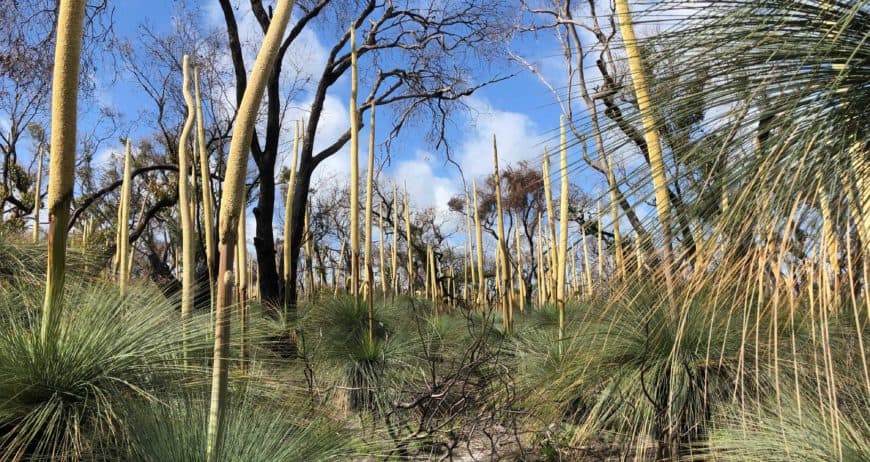PARK WATCH Article June 2023 |
Catherine Watson from Save Western Port woodlands reports on the epic journey to protect this important wildlife corridor from sand mining
After 747 submissions, 27 hearing days, 72 presentations, 32 expert witnesses and 570 documents, the community’s work on the Bass Coast Distinctive Areas and Landscapes (DAL) hearing is done.
For Save Western Port Woodlands (SWPW) members and our allies, it’s been arduous, time-consuming and costly, but also unexpectedly useful.
The Woodlands proved to be the major issue of the eight-week hearing, which started in the Wonthaggi Town Hall in early March and closed in Spring Street in late April.
The Planning and Environment Act defines a distinctive area as one containing ‘a concentration of unique attributes of state and/or national significance that are under threat from significant or irreversible land use change’. It seemed tailor-made for the Western Port Woodlands, the last significant remnant forest in the Gippsland Plains bioregion and a biodiversity hotspot, according to a 2021 report by VNPA. It’s also under threat from a surge in sand mining, with 10 working mines, another nine approved and seven under application.
So we were dismayed when the draft Bass Coast Statement of Planning Policy (SPP), released in April 2022, contained nothing about protecting the Woodlands but plenty about protecting the sand from ‘encroachment by incompatible land uses’.

Two-thirds of the submissions called for an end to sand mining in the Woodlands. They came from our members, Bass Coast Shire Council and organisations including VNPA, the Western Port Biosphere and the two local conservation societies.
SWPW, VNPA and the South Gippsland Conservation Society formed the Western Port Woodlands Alliance for the hearing, employing an advocate and calling expert witnesses.
Even before we presented our case, the Department of Transport and Planning (DTP) accepted that the SPP ‘should explicitly recognise the unique, significant and intrinsic biodiversity value of the Western Port Woodlands corridor as a whole, irrespective of land tenure, and the potential for cumulative, permanent impacts associated with extractive industries in the region.’ Further, the Woodlands are ‘a concentration of unique attributes of state and/or national significance that are under threat from significant or irreversible land use change’.
This was a real breakthrough. It meant that for the first time the Woodlands were acknowledged and valued in official government documents. Now came the hard bit: persuading the panel to do something about the threats.
DTP agreed with the Alliance and Council on most points, supporting further work to identify biodiversity values and habitat connectivity and to use planning provisions to strengthen protections. However, they argued that most of the work must be done after the SPP is completed.
The dangers are obvious. Council argued for interim environmental and landscape overlays – a virtual moratorium – to protect the forest while the planning work continues.
Our closing submission noted that it had been left to the community to do the work to identify environmental values so the SPP could protect them. Sound familiar? Now it’s up to the planning panel to adjudicate and report to Planning Minister, Sonya Kilkenny, who will make the final decision.
Ultimately, the decision to end sand mining in the Western Port Woodlands will be political. Our work is not done but we are buoyed by the progress we have made. Unexpected to us and probably unexpected to the state government, which can no longer pretend that the regulatory system will take care of our legitimate concerns about mining in woodlands.
- Read the latest full edition of Park Watch magazine
- Subscribe to keep up-to-date about this and other nature issues in Victoria
- Become a member to receive Park Watch magazine in print
